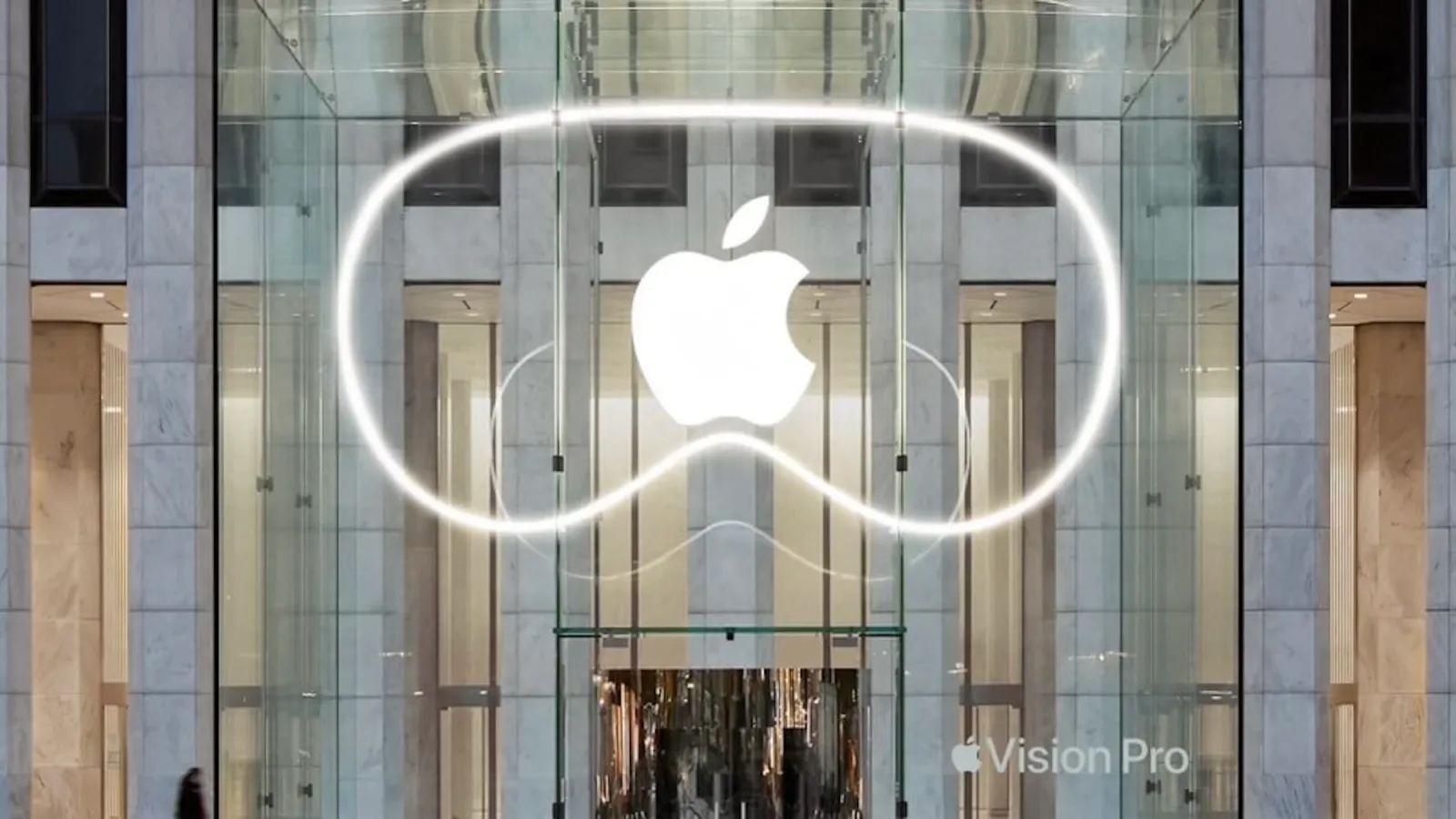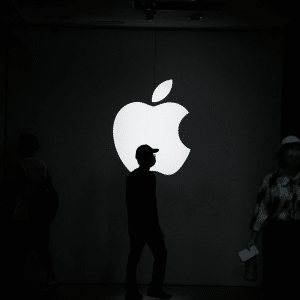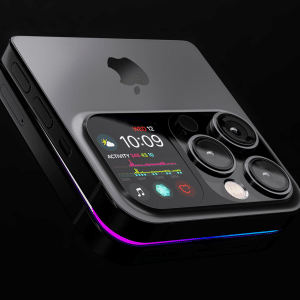With rumors pointing to the addition of the M5 chip, Apple’s upcoming second-generation Vision Pro could be a major upgrade in terms of internal performance. Industry analysts, including Bloomberg’s Mark Gurman, suggest that this AR headset may launch between fall 2025 and spring 2026, positioning it as a next-level immersive device in Apple’s lineup.
The Vision Pro 2’s expected enhancements, driven by advancements in Apple’s custom silicon, underscore a strategic focus on refining the device’s internals for an improved AR experience. Let’s delve into the details of these upgrades and Apple’s evolving approach to the AR market, exploring how the Vision Pro 2 could reshape the landscape for augmented reality technology.
What the M5 Chip Brings to Vision Pro 2
Apple’s custom silicon has already redefined performance across its product lineup, from MacBooks to iPads and iPhones. With the Vision Pro 2, the M5 chip is expected to drive a significant leap in processing power and efficiency. The M2 chip in the current Vision Pro, which launched in 2022, offers solid AR performance, but Apple’s rapid advancements mean that by 2025, the M5 chip will represent a generational leap.
The M5 chip is anticipated to provide faster processing, more efficient power usage, and enhanced graphics capabilities, all of which are crucial for delivering a smoother, more immersive AR experience. For a device like the Vision Pro, the chip’s power efficiency is particularly important. AR applications are notorious for their intensive processing requirements, and a powerful but efficient chip could be key to extending battery life—a crucial factor in the user experience. Additionally, Apple’s integration of machine learning capabilities within the M5 could enable more advanced AR features, like enhanced object recognition and real-time adjustments, which could take user interactivity to the next level.
This upgrade is likely to be a game-changer for the Vision Pro 2, allowing it to handle more complex AR applications and enabling smoother multitasking. By 2026, Apple’s “M6” chip may even be on the horizon, indicating that the M5 could serve as a stepping stone in Apple’s path to consistent, powerful upgrades in wearable technology.
Reusing Design with Enhanced Functionality
Reports from The Information suggest that the Vision Pro 2 will largely reuse parts from the first-generation model, with limited changes to its physical design. This strategy allows Apple to focus on refining the internal technology without the added expense or complexity of re-engineering the headset’s exterior. From a design perspective, this approach makes sense; rather than redefining the form factor, Apple can channel resources into improving processing power, battery efficiency, and user experience.
While some might be disappointed by the absence of a major visual redesign, Apple’s incremental approach reflects its commitment to AR as an evolving technology that requires robust performance over aesthetic changes. Reusing the design also offers Apple the flexibility to test its technology on a proven platform before investing in extensive design changes for future iterations.
This strategic reuse of parts also has implications for Apple’s environmental goals. By reusing materials and focusing on software and chip advancements, Apple may be able to minimize waste and streamline production, a key element of its broader commitment to sustainability.
Apple Intelligence and Smart Integration

As part of Apple’s expanding technology ecosystem, the Vision Pro 2 could incorporate Apple Intelligence, a suite of AI-driven features first referenced by Apple supply chain analyst Ming-Chi Kuo. This Apple Intelligence integration would likely capitalize on the M5 chip’s advanced processing capabilities to deliver new levels of interactivity and personalization. From real-time adjustments in augmented reality environments to predictive AI enhancements, Apple Intelligence could make the Vision Pro 2 a much more dynamic and responsive device.
An AI-driven approach could also enhance existing features. For instance, Apple’s Vision Pro has the potential to use AI for adaptive content rendering based on environmental context, user preferences, and even real-time tracking of surrounding objects and people. As Apple integrates AI capabilities more deeply into its products, Vision Pro 2 could set a new benchmark for intelligent AR technology, distinguishing it from competitors like Meta’s Quest series or Microsoft’s HoloLens.
The AI potential in Apple’s new headset is significant. Imagine a device that adjusts to lighting changes, tracks user interactions seamlessly, and even anticipates movements to create a smoother AR experience. Apple Intelligence could elevate Vision Pro 2 beyond its competitors by introducing features that make the headset intuitive and adaptive, rather than simply reactive.
An Eye on the Smart Glasses Market
Beyond just AR headsets, Apple is investigating the broader smart glasses market, as noted by Gurman in his “Power On” newsletter. This research includes a look at consumer responses to existing products like Snapchat Spectacles and Meta Ray-Ban smart glasses, which let users capture video, make phone calls, and play music. Such exploration indicates that Apple may be envisioning a future in which wearable technology extends beyond the Vision Pro line and into more compact, everyday devices.
Gurman speculated that Apple could eventually introduce smart glasses integrated with AirPods functionality, potentially allowing users to access audio features and voice assistants directly from their glasses. This could make Apple a key player in the consumer smart glasses market, leveraging its hardware-software integration to offer a product that seamlessly blends AR functionality with traditional smart device capabilities.
If Apple moves forward with this concept, we could see an ecosystem of Apple wearables with overlapping features, where users could transition seamlessly from the Vision Pro headset for immersive experiences to lighter smart glasses for on-the-go functionality. This dual-device strategy could position Apple as a leader not only in augmented reality but in wearable tech overall, creating a connected, AR-ready world for users.
Why the Vision Pro 2 Release Timeline Matters

Gurman’s projection of a fall 2025 to spring 2026 release window for the Vision Pro 2 suggests that Apple is taking its time to refine the device, possibly waiting for advancements in supporting technologies. By this timeline, we could see the Vision Pro 2 emerge alongside or just after the introduction of Apple’s M6 chips, which might enhance compatibility and functionality with other Apple devices that have upgraded to M-series chips.
This timeline also provides room for Apple to develop a more robust software ecosystem around the Vision Pro. An extended development period allows Apple to cultivate partnerships with AR-focused developers and businesses, ensuring that the Vision Pro 2 has a strong content library and application base at launch.
In terms of market timing, Apple’s Vision Pro 2 may also benefit from the maturing AR market. By waiting until late 2025 or early 2026, Apple positions itself to release a more powerful device in a market where consumer interest and understanding of AR technology may be higher, thanks to increased visibility and potential mainstream adoption of AR solutions by that time.
A New Standard for Connected Devices
Apple’s Vision Pro 2 headset could become a central part of a larger, interconnected Apple ecosystem. As Apple expands its product lineup with Vision Pro and potentially smart glasses, it could set new standards for how devices communicate and work together within the Apple ecosystem.
This approach would be consistent with Apple’s strategy of offering a tightly integrated suite of products that enhance each other. Imagine a scenario where Vision Pro 2 works seamlessly with other Apple devices, allowing users to switch between devices without interruption. For instance, a Vision Pro user could transfer content from the headset to an iPhone or iPad, or use the headset to control other smart devices in their home.
Such integration would make Apple’s AR offerings more attractive, as users would benefit from a device that feels less like a standalone product and more like a part of their daily digital lives. This cohesiveness could make Vision Pro 2 a must-have for Apple enthusiasts looking for a connected experience that leverages the best of Apple’s hardware and software.
Vision Pro 2 and the Evolving Future of AR
Apple’s Vision Pro 2 is shaping up to be more than just an upgraded headset; it represents Apple’s vision for an immersive future where AR plays a key role in daily life. With features like the M5 chip, Apple Intelligence, and potential enhancements for user interaction, Vision Pro 2 could redefine AR standards and shape the future of wearable tech.
At the same time, Apple’s exploration into the smart glasses market shows a commitment to making AR more accessible to everyday users. By expanding its lineup to include both advanced headsets like Vision Pro and potentially lighter, simpler AR devices, Apple is positioning itself to dominate the wearable tech space and push the industry toward a more augmented future.
Whether for professional applications or personal use, Apple’s dedication to AR technology is poised to bring new opportunities for creators, developers, and consumers. As Apple continues to advance its hardware, build its software ecosystem, and explore new device formats, the Vision Pro 2 will likely be a cornerstone of Apple’s AR ambitions.
The Vision Pro 2 headset represents Apple’s commitment to innovation and the potential for wearable technology to become integral to modern digital life. By enhancing internal hardware, exploring smart glasses, and integrating AI-driven Apple Intelligence, Apple is creating a foundation for an immersive AR future that could change how people interact with technology. Through its commitment to AR and dedication to the user experience, Apple aims to make augmented reality a seamless, enriching part of everyday life, redefining what’s possible with wearable tech.








